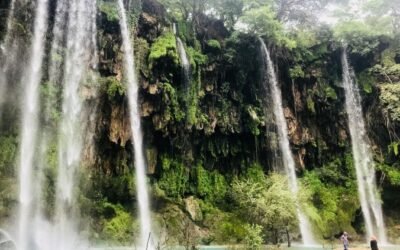6 Traditional Arts Witnessed at the Sultan’s Festival of Horse Racing
The Sultan’s Festival of Horse Racing, graciously sponsored by His Majesty Sultan Haitham bin Tariq – may God protect him – in the city of Al-Adeyat in Al-Seeb, was an exceptional cultural event that blended authentic Omani horsemanship with traditional folk arts. This celebration highlighted the depth of the national identity through artistic and heritage performances that revived ancient traditions, becoming an inseparable part of Oman’s cultural heritage.
Traditional Arts at the Heart of the Festival
The festival opened with a welcoming segment featuring several Omani folk arts, including horse dancing and camel rizfa performances. It also showcased:
Here’s a brief overview of these traditional arts:
Nadba Art
Nadba, a symbol of Musandam Governorate, originated as a warning cry used by tribes in the past. Over time, it evolved into a tradition performed by guests to show gratitude for hospitality. Today, it is celebrated during social occasions like weddings and national events, reflecting Omanis’ deep connection to their heritage.
Hamble Al-Khail
The Hamble Al-Khail performance, presented by horsemen while riding their horses, highlights the strength of the horses and the bravery of the riders. This art features short poetic verses praising the horses and riders, celebrating the spirit of Omani horsemanship.
Qasafi Rizha
Rizha, one of Oman’s prominent traditional arts, includes three types:
- Hamble (Rizhat Al-Darb): Participants move in a line, synchronized with rhythmic sounds of swords and rifles.
- Lal Al-Awd: Known for melodic variations, often named after creators or locations like “Busheriya” and “Al-Khalidiya.”
- Qasafi: A faster-paced form featuring energetic sword performances in harmony with vibrant rhythms.
Mahwarab Al-Khail
Mahwarab Al-Khail, or “Trous,” showcases traditional horsemanship skills. Riders, led by elders, perform organized movements in a continuous line, combining tradition with enthusiasm at the racecourse.
Al-Bara’a
Al-Bara’a, a youth folk art from Dhofar Governorate, symbolizes courage and generosity. Performed by two men with daggers in synchronized movements, it is accompanied by songs of love and romance. Recognized as an intangible cultural heritage by UNESCO in 2010, Al-Bara’a highlights the global importance of Omani folk arts.
Al-Azi
Al-Azi, also known as “Al-Azwa,” is a poetic art linked to pride and praise. It involves powerful recitations by a poet, accompanied by movements that slow down during the performance. Al-Azi, added to the UNESCO Intangible Cultural Heritage list in 2012, emphasizes the richness of Omani traditions.




